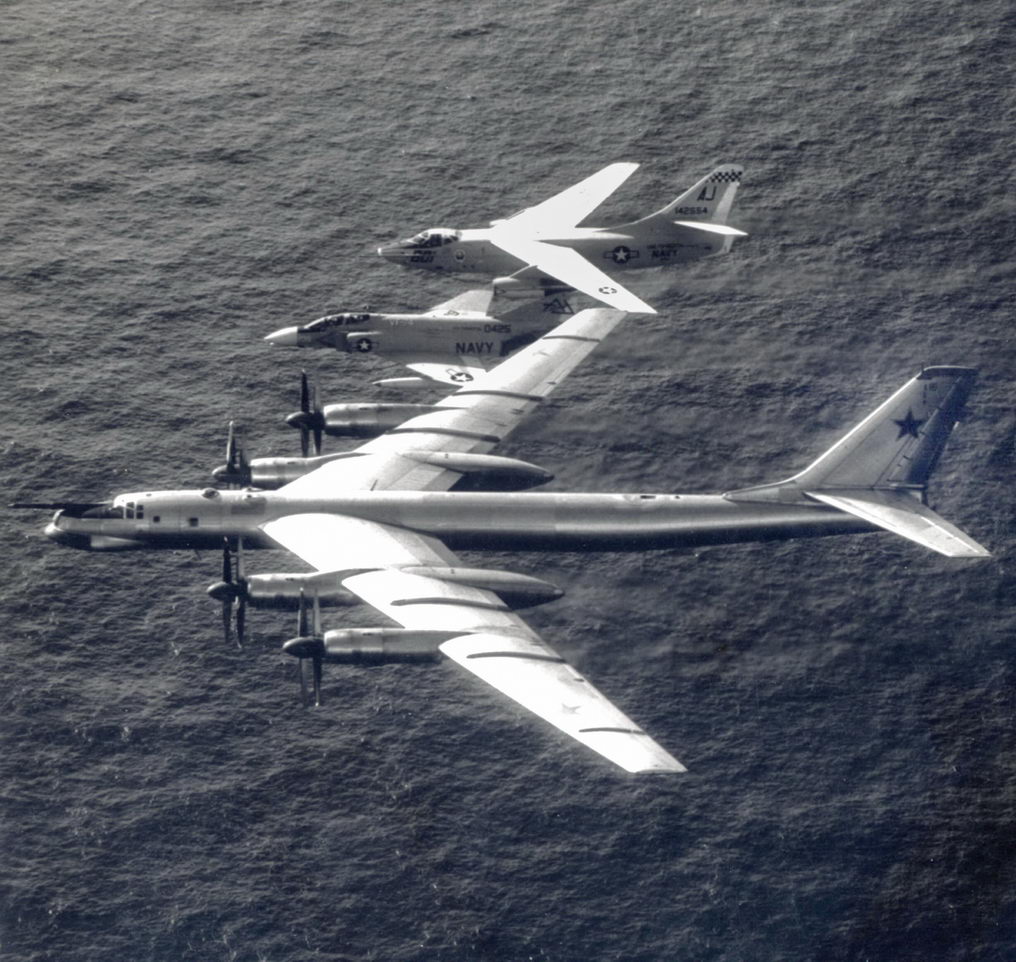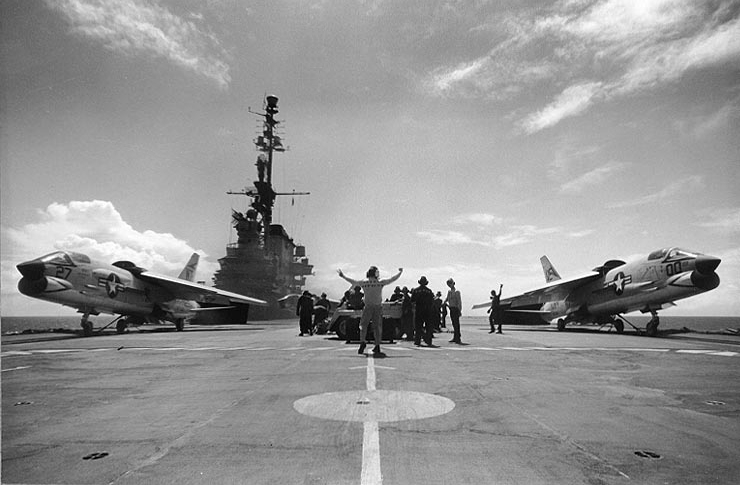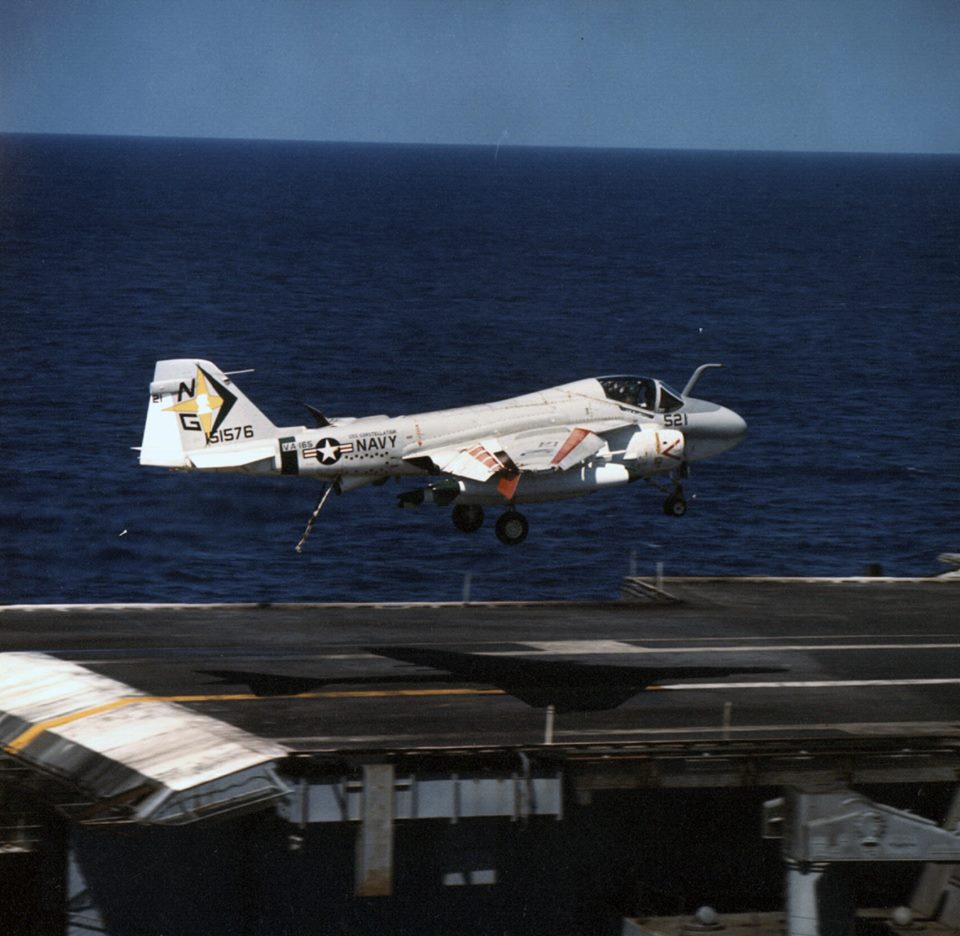“This is the Chief-of-Staff: Launch the alert five.” Immediately above, on the flight deck, we could hear the A-6 engines starting.

An unarmed EC-121 propeller-driven aircraft was shot down by a North Korean MiG-21 on April 14, 1969, when it was on a regular reconnaissance patrol over the Sea of Japan from its base in Atsugi, Japan. The 31-man crew as a whole perished. Task Force 71 (TF-71) was created as a result of the American response to protect such aircraft over those international waters in the future. The battleship New Jersey, three cruisers, 16 destroyers, and the carriers Enterprise, Ticonderoga, Ranger, and Hornet made up the original TF-71. In the Sea of Japan, to the east of South Korea, at a location known as Defender Station, the task force’s components gathered.
In order to assist American forces fighting in Vietnam, USS Enterprise was in operation at Yankee Station in the Tonkin Gulf. As the Assistant Combat Information Center (CIC) Officer, I was associated with Enterprise. At the moment, Rear Admiral Malcolm Cagle was appointed Commander Task Force 71 (CTF-71), and he was onboard Enterprise with his staff. We were two of four officers tasked with keeping Flag watches in Enterprise CIC because my boss, the CIC Officer, and I were given a temporary assignment to the Admiral’s staff. The other two were Flagstaff members.

A Soviet Tupolev Tu-16 Badger aircraft flew over the task force the day after their rendezvous at Defender Station. I seized control and started directing the launch of F-4 fighter aircraft from the Ranger and F-8 aircraft from the Ticonderoga to intercept and escort the Badgers while I was in CIC at the time. Admiral Cagle participated in the operation from CIC. I was told to report to Captain Kent Lee on the bridge once the Soviet aircraft had left the area. Captain Lee and Admiral Cagle were waiting as I entered the bridge.
Captain Lee looked at me and said, “John, the Admiral tells me that there was a lot of confusion in CIC during the intercepts of the Soviet aircraft.” The Admiral had sent his aide to me during the operation to ask me technical questions. I ignored him since I was busy keeping an eye on the intercepts, especially their fuel levels. I look Captain Lee in the eye and replied, “If there was any confusion in CIC, Captain, it was on the part of the Admiral and not my crew.” Lee broke into a grin and said, “Thank you, John. You’re dismissed.” I walked off the bridge without experiencing any negative effects from my shot at Admiral Cagle.
I was given the duty of keeping watch from midnight to six in the morning as the junior officer of the four officers doing six-hour flag watches in CIC (balls to six in Navy lingo). I was keeping watch in CIC a week or so after the initial meeting. It was around 2:30 in the morning when a man calling me over to see a surface contact that was traveling directly toward the force at 31 knots was watching the surrounding surface picture on a 50″ raw radar scope.
This was a potential threat that I could not ignore because we were aware that the North Korean Navy possessed quick patrol boats armed with devastating surface-to-surface missiles. I made a call to the flag war room on the phone. An intelligence staff member responded. He promised to contact the Admiral and get back to me after I explained to him how I perceived the issue. My phone rang a little while later. The Chief of Staff for the Admiral, Captain Kennedy, was there. He introduced himself as the chief of staff. “Launch the alert five.”
Four heavily armed and crewed A-6 attack aircraft that could be launched within five minutes of command were part of alert number five, and they were stationed on the flight deck. The ship’s air operations officer, Cdr. Tom Cawley, and I promptly exchanged the directive. We could hear the A-6 engines starting on the flight deck just above us in a matter of minutes.
Squawk boxes (main communications systems, or MC) were the traditional means of communication between departments on aircraft carriers back then. For obvious reasons, we never reported the issue with our CIC MC box to maintenance. We could hear conversations taking place between the Captain’s bridge and the Admiral’s War Room. Admiral Cagle informed the bridge, “Kent, we are launching alert 5,” prior to the deployment of alert 5.
Captain Kent Lee’s reply was, “Negative.” Just one word. After a long very pregnant pause, the Admiral meekly said, “Well, alright Kent.” This conversation did not surprise me because I was aware of how much respect these two men had for one another. I was unaware that Captain Lee had been observing the situation on a Naval Tactical Data System (NTDS) console in the mini-CIC immediately off the bridge. On the Captain’s console, the contact that our radarman in CIC had precisely tracked at 31 knots appeared to be traveling at 24 knots.
But Lee, being the cunning leader that he was, surmised who the contact was, and it turned out that he was right. It was a Russian Soviet destroyer that had left the region to refuel and was now coming back.

I was summoned to the Captain’s sea cabin around ten minutes after the alert 5 launch was canceled. When I was seated across from Captain Lee, he looked at me and said, “John, do you realize that you may have started world war three?” I was shaken by this charge by a leader I so much admired but I knew that he would respect the truth and I laid it out for him.
He interrupted me when I was about to say that the NTDS system’s computer monitoring of surface targets was much less precise than the raw radar scope tracking. He said, “That never occurred to me.” The truth is that the staff came dangerously close to starting World War III by ordering the launch of armed aircraft to attack the unidentified contact, and it was Captain Kent Lee’s commitment (he was up very early to monitor the tactical situation) and wisdom that stopped that terrible possibility.
A terrifying command involving a nuclear attack on North Korea was given to the unit while TF-71 was stationed there. An Air Force unit on alert in South Korea informed the CTF-71 Staff to be ready to support a nuclear strike. According to Anthony Summers and Robyn Power’s book “Arrogance of Power: The Secret World of Richard Nixon,” he was drunk when he gave the order. When Nixon awakened the following morning, National Security Advisor Henry Kissinger informed him of the potential strike.

The Navy depends on outstanding commanders to succeed, according to the events I saw during that time. That night, Captain Kent Lee wasn’t dozing off in his ship’s quarters. When the Admiral’s staff and I were involved in deciding to destroy a Soviet ship, a decision that may have triggered World War III, he was seated at an NTDS console just off the bridge. What may have been a catastrophe that changed the course of history was averted because of Captain Kent Lee’s exceptional leadership and meticulous attention to tactical details.
Photo by PH3 Kris White / U.S. Navy, U.S. Navy, and U.S. Navy via John Newlin

